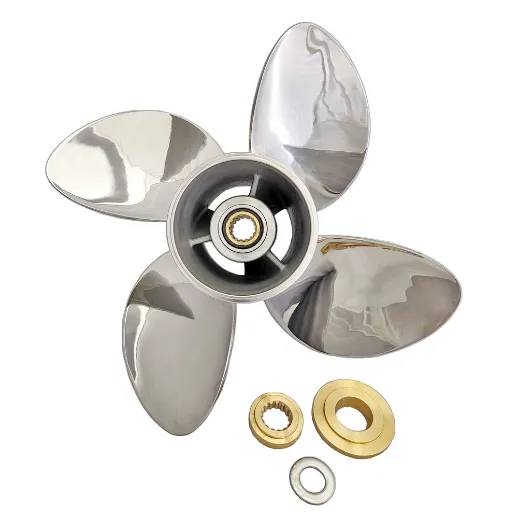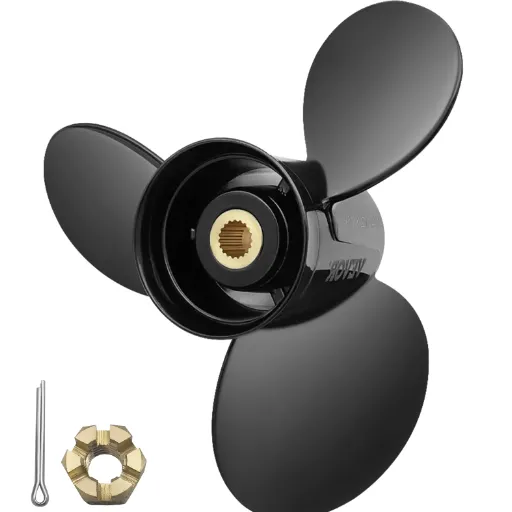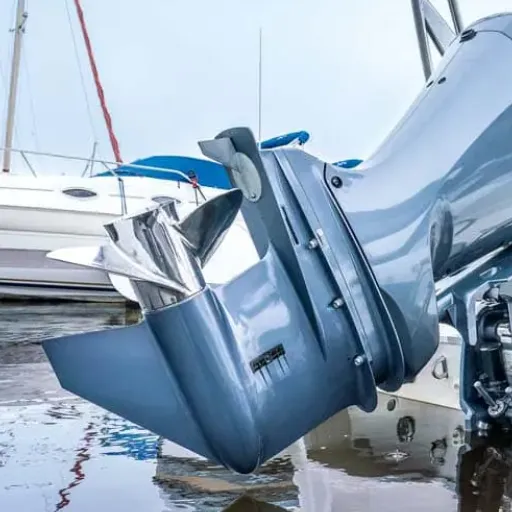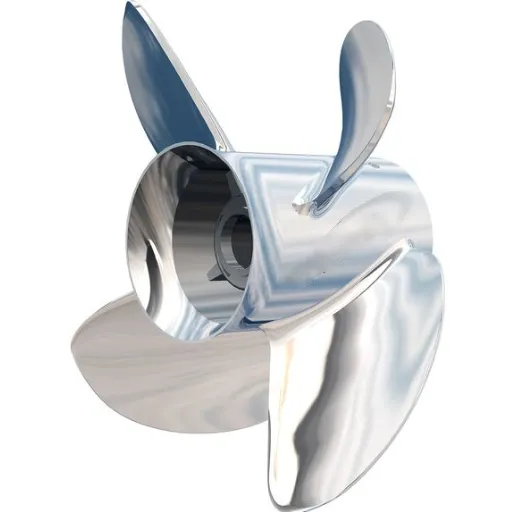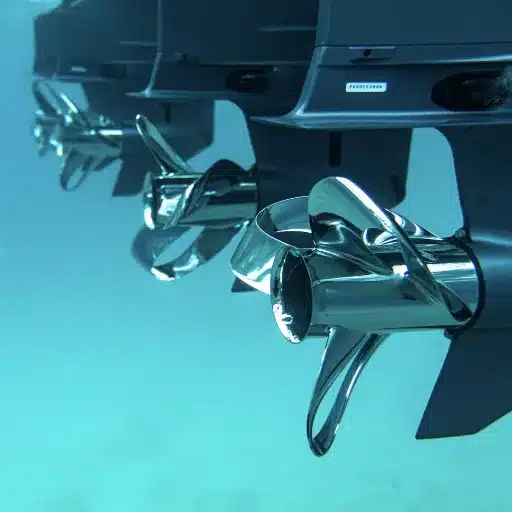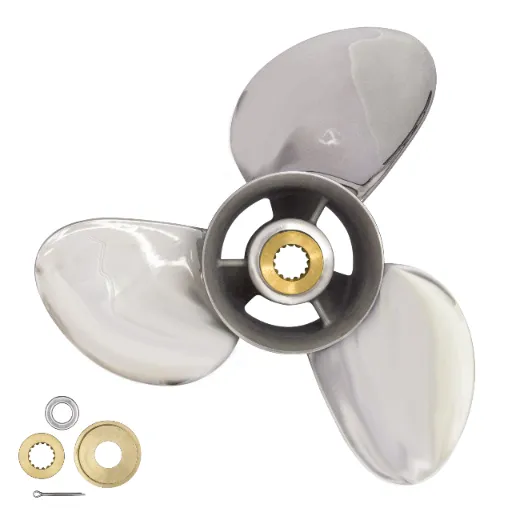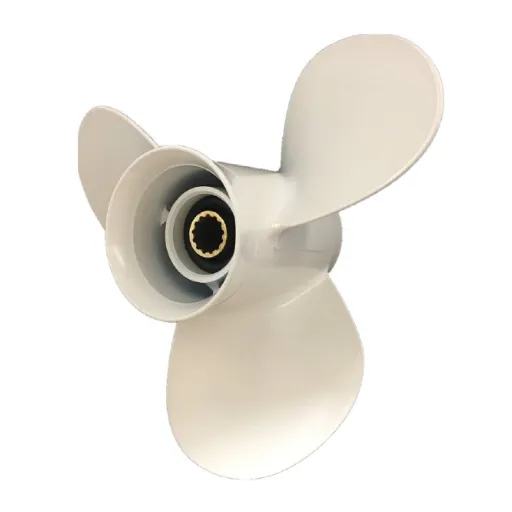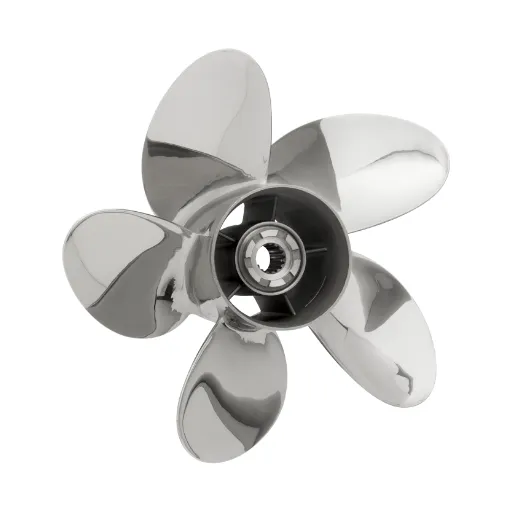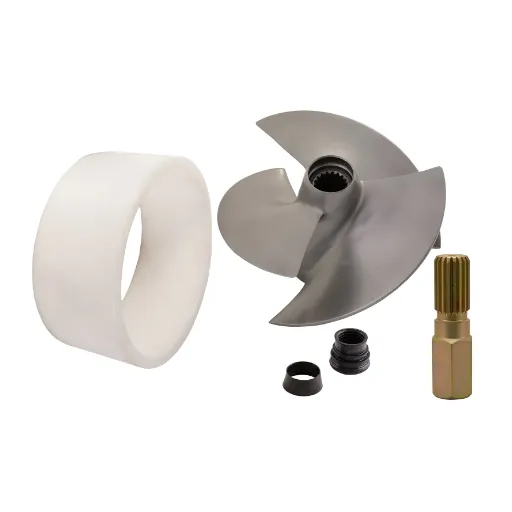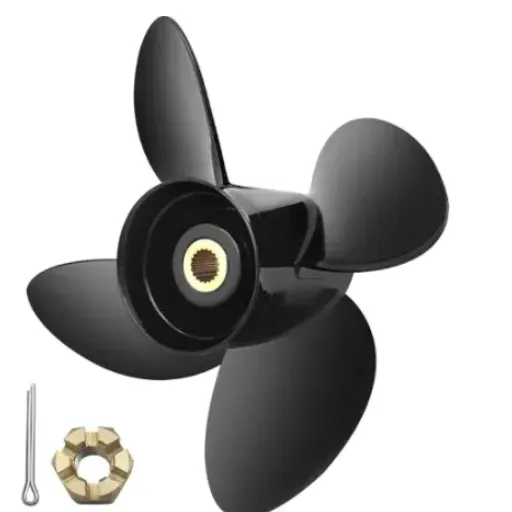Boat lovers understand that each part of their vessel matters when it comes to performance, safety, and sheer pleasure while afloat. Among these is the earnest matter of a propeller. One product is earning its reputation in the trades for 2025: the Yamaha Outboard Stainless Steel Propeller. Used with masculinity and efficiency, these propellers provide an entirely new experience of boating. But what makes it an essential upgrade for the future? In this article, we’ll explore the different features, performance, and sound of the right propeller to maximize your boat’s chances. This informative and helpful guide will be of help to every old-timer or occasional adventurer by helping them understand the reasoning behind the Yamaha Outboard Stainless Steel Propeller, making it to the tip of every boater’s checklist.
Understanding the Importance of Outboard Propellers
What is an Outboard Propeller?
An outboard propeller is a crucial part of a boat’s propulsion system, applying the engine power needed to create movement through water. It consists of a hub and two or more blades intricately designed for efficiency and performance. The thrust generated by a propeller either pushes the boat forward or backward, depending on which way the propeller rotates. Yet, diameter, pitch, blade material, and design will decide how fast or slow the propeller performs, how well fuel is conserved, and how easy it is to maneuver.
Modern technological advancements in construction aim to build propellers that offer enhanced durability and precision. For example, stainless steel propellers exhibit higher strength and less flexing under high loads compared to aluminum designs, and are therefore used in various high-speed marine applications. More importantly, by selecting the right propeller for your engine and boating style, you gain maximum acceleration, smoothness of ride, and less strain on the engine, thereby maximizing both performance and longevity. Knowing such details is essential for optimizing your boating experience.
Effect of Propeller on Boat Performance
The propellers heavily influence the final efficiency, speed, and handling of the boat. It would perform best when the thrust is maximized by a propeller ideally suited to its engine’s RPM. For example, a properly pitched propeller is said to allow up to 20% more fuel economy, making it something most boaters would like to have from both a pragmatic and environmental standpoint. Then, again, materials matter, as stainless steel propellers, when tested against aluminum ones, usually perform better due to their rigidity and reduced flexing under severe conditions.
💡 Performance Tip:
Blade geometry, such as pitch, diameter, and rake, also affects the maneuverability and handling of a boat in various water conditions. A higher pitch propeller is best suited, for instance, for high-speed applications, whereas a lower pitch will help in acceleration and towing power. The latest generation of propellers, with their variable pitch systems, has allowed an extra measure of flexibility for the postponement of multi-purpose boats, allowing the operator to adjust to conditions accordingly. Being conversant with these technical considerations gives the boat owner an advantage in deciding on improvements to the boat’s performance and longevity, resulting in a much better boating experience tailored to their wants.
Benefits of Stainless Steel Over Aluminum
A few things make stainless steel stronger than aluminum. Hence, for strength, endurance, and resistance to environmental factors, aluminum often isn’t favored. The most significant advantage is tensile strength, which can be used in high-tension situations like high-performance boat propellers. In comparison, aluminum is lightweight and inexpensive but wears faster under heavy loads or abrasives.
Likewise, corrosion and rust resistance become significant for marine usage. Stainless steel’s resistance to such corrosive attacks makes it significantly more viable than aluminum for long life and less frequent replacements. Stainless steel, with its rigidity, also excels in the precision of designs and applications like boat propellers, which require ideal blade integrity under pressure.
While aluminum might be fit for lighter or casual use, stainless steel, with its durability, is quite cost-effective in the long run. Being able to withstand a lot of heat and being polished make it look beautiful, and performance is also prioritized: function or form. So, by choosing stainless steel over aluminum, one essentially invests in greater reliability, long-term savings, and an improved experience in harsh environments.
Exploring Yamaha Outboard Propellers
Overview of Yamaha Outboard Propeller Options
Yamaha outboard propellers range in diversity from those built to hasten speed to the opposite end of the spectrum for heavy-duty applications. The inclined varieties ensure that one can find a propeller for their particular boat, prevailing conditions, or specific performance expectations. Using the latest high-grade material selection and engineering innovations, Yamaha has prepared its propellers to be the most efficient and reliable. Here’s an outline of the main classes of Yamaha propellers:
⚙️ Stainless Steel Propellers
These propellers, made of stainless steel, are resistant to wear and are used in performance-oriented operations. They have greatly enhanced durability and resistance to corrosion, which makes them excellent for saltwater use. The design advantage is also prominent among these propellers, imparting quick acceleration, higher top speeds, and reliability even under adverse conditions.
🔩 Aluminum Propellers
With a lightweight design and competitive price, Yamaha’s aluminum propellers represent an excellent option for recreational boaters or those in freshwater environments. Easy to replace and maintain, the flexibility of these propellers helps dissipate shock upon impact, thereby minimizing further damage to the drive system in cases of accidental contact with debris or underwater obstacles.
🏆 Reliance® Series Propellers
These premium stainless steel propellers are engineered especially for Yamaha engines and high thrust capacity. They provide better acceleration, greater fuel efficiency, and smooth cruising, allowing boaters to enjoy a pleasant journey on the waterways.
🦅 Talon® Series Propellers
These propellers provide better control and less cavitation. They are built for heavy-duty use and found to be highly efficient. For maximum power under all conditions, they provide excellent thrust with minimal vibrations.
🌊 Saltwater Series
These are corrosion-resistant propellers designed to work in the harshest marine environment. Combining stainless steel, strength, speed, and durability ensures that even boats frequently used in saltwater conditions can be optimized for both efficiency and longevity.
⚡ Dual Thrust Propellers
The dual thrust propellers are designed to provide good reverse thrust with less turbulence, making them suitable for use on pontoons or heavy boats that may need extra power for low-speed turns. It maximizes thrust while minimizing drag, thus facilitating handling quite well.
Each propeller series goes through rigorous testing and complements Yamaha’s commitment towards functionally excellent design and performance. Upon choosing a propeller based on boat type, water domain, and user preferences, one can maximize their boating experience while relying on the propeller for years of safe operation.
Features of Yamaha F70 and Other Models
The Yamaha F70, alongside its sister models, sets forth the latest technology and features designed to appeal to both casual boaters and professionals. These features constitute a blend of ingenuity, ruggedness, and efficiency, ensuring the whole package delivers satisfactory performance in different water situations. Light-weight design is among the points worth mentioning:
- Lightweight Design: One of the selling points for Yamaha F70 among 4-stroke outboards in its class is its lightweight. A reduced weight means they use little fuel and have better handling and speed.
- Fuel Injection System: An EFI excels in fuel economy by dispensing fuel in precise amounts and with extremely fine atomization to the engine, resulting in a sipping engine with smooth operations.
- Variable Trolling RPM Switch: Users can now precisely modulate their engine speeds for trolling or low-speed cruising with the settings provided, promising utmost controllability and utility in various environments.
- Reliable Durability: Yamaha engines are equipped with germproof coatings for years of service, even in saltwater environments, making them a dependable choice for the long haul.
- Exceptional Thrust and Power: Extraordinary thrust, punctuated by efficiency, undoubtedly puts the F70 model in the spotlight for class-leading horsepower and truly in its power and operational economy.
- Quiet and Smooth Running: Yamaha F70 engines are designed to minimize the noise and vibration during operation, thus providing an attractive and comfortable ride.
By incorporating such features, Yamaha always seeks to set the benchmark in marine outboard technology, offering engines that appeal to both hobby boaters and serious fishermen.
Choosing the Right Propeller for Your Boat in Yamaha
Choosing the correct propeller for your Yamaha outboard motor is key to the successful performance and fuel efficiency of your boat. The propeller influences speed, acceleration, and handling, among others. Here are a few things to consider when choosing a propeller:
Key Selection Factors
Material:
Generally, Yamaha propellers are made of aluminum and stainless steel. Aluminum propellers are lightweight and inexpensive, making them suitable for casual boating. Stainless steel, on the other hand, is a strong, rigid material that provides better performance, especially in harsh environments.
Diameter and Pitch:
Propeller diameter stands for the width of the circle made by the blades while spinning, and the pitch is the distance a propeller moves in one complete rotation. The larger-diameter propellers provide better thrust, while those with lower pitch ensure better thrust during acceleration. A good balance is critical for performance optimization.
Number of Blades:
Most Yamaha propellers are three or four-bladed. The three-blade propellers tend to have a higher top speed, and four-blade propellers offer better midrange performance and control in rough water.
Boat Size and Engine Types:
Different types of boats and Yamaha outboards require different propellers. Always check with your Yamaha engine manual or a certified Yamaha dealer for compatibility and best performance options.
Ensuring the propeller fits your specific boating needs guarantees smooth rides and fuel efficiency with excellent performance. Yamaha offers tools and expert help to ensure you make the very best choice.
Stainless Steel Propellers: A Deeper Dive
Advantages of Stainless Steel Propellers
Stainless steel propellers carry the promise of durability and increased performance. This makes them the best choice for many boat owners. However, one of the few things stainless steel can brag about is its immense strength, which allows these propellers to better withstand conditions and impacts compared to aluminum counterparts. This also often prevents the replacements from being made too frequently, leading to an increase in the life cycle. And when it comes to steel propellers, their performance is precise and consistent. This rigidity allows the blades to stay in use at their optimum shape, leaning towards high speeds.
The other big plus is their efficiency. The stainless-steel propellers are generally thinner and more hydrodynamic than aluminum ones; thus, they suffer less drag and greater fuel efficiency. The design excels at achieving high-end speed, making it a good choice for performance boating. Even so, the stainless-steel propellers may come with up-to-date designs and a wide assortment of blade designs and sizes, which can be tailored to specific boating requirements.
Of course, the stainless-steel propeller may be more expensive initially, but considering how well it pays for itself over time and its reliability and ability to enhance your boat’s performance, it proves very worthwhile for making that smooth, efficient hole through a variety of water conditions.
Performance Metrics: Speed and Efficiency
Both the aerodynamic and hydrodynamic properties need to be considered when discussing the realization of laminar stainless steel speed and efficiency. These propeller blades are designed to provide minimum drag while imparting maximum thrust, allowing the boat to achieve higher speeds with minimal power. Performance testing has shown that being rigid and carefully engineered has facilitated accelerations and cruising at steady speeds under load variations and water conditions, which are superior for stainless steel blades.
Another aspect that makes stainless steel propellers a great proposition is that they provide good conversion of engine power for forward thrust. Fuel efficiency will result from increased efficiency, especially if the travel distance is longer or usage is more frequent. Such improvements enhance the economy of afloat vessels while simultaneously decreasing environmental degradation by reducing fuel consumption and emissions. By meshing durability with performance, stainless steel propellers set the standard for maximizing speed and efficiency in both recreational and professional boating.
Some Common Misconceptions Regarding Stainless Steel Propellers
⚠️ Myth Busting
While stainless steel propellers hold the top status, a plethora of myths continues to surround them. One myth is that stainless steel props are always too expensive for the typical boat owner. Although they tend to be more expensive upfront than aluminum propellers, with rare exceptions, their outstanding durability and longer lifespan often make stainless steel propellers a wise investment to minimize frequent replacements down the line.
Another misconception is that stainless steel props are too heavy, which may compromise performance. While stainless steel blades are indeed heavier compared to aluminum, their higher tensile strength allows for the use of thin blades, providing greater precision and acceleration under various conditions.
In addition, some believe stainless steel props corrode in saltwater. However, in recent times, material engineering and protective coatings have significantly improved rust and wear resistance, optimally maintaining the performance of stainless steel props in the most demanding aqueous environments. These clarifications enhance the understanding of the worth and practicality of stainless steel propellers in fulfilling a variety of boating requirements.
Trends in Outboard Propeller Technology for 2025
Innovations in Propeller Designing and Manufacturing
The outboard propeller industry is currently undergoing significant changes in design and manufacturing with the arrival of 2025. Precision geometry design of blade profiles ensures better fuel efficiency, greater thrust, and reduced drag, contributing to green and affordable boating options. CAD and fluid dynamics simulations, on the other hand, assist manufacturers in making aerodynamic and hydrodynamic designs tailored to vessel type and operational requirements.
Additive manufacturing, or 3D printing as it is better known, is becoming an essential technology in propeller production. Through this process, rapid prototyping and the production of lightweight, high-strength propellers can occur, substantially reducing lead time and material waste. Simultaneously, alloy compositions are being explored in which titanium is combined with other metals so as to impart unrivaled strength and corrosion resistance in harsh marine environments.
Smart technologies further complement these developments. Embedded propeller sensors measure real-time performance parameters such as RPM, cavitation level, and blade stress, transmitting data to onboard systems for fine-tuning and implementation toward improved efficiency. This integration of intelligent systems serves as a threshold that should transform propeller design to optimize maritime performance.
The Role of Technology in Prop Performance
The infusion of state-of-the-art technology into propeller systems introduces new levels of precision and adaptability. Advanced computational tools, such as CFD (Computational Fluid Dynamics) simulations, are used during the design phase to predict and improve hydrodynamic efficiency under different operating conditions. Machine learning algorithms analyze vast amounts of performance data collected by sensors to determine patterns and offer action-oriented insights that transcend traditional analytical parameters. Consequently, individual propeller optimization is accompanied by predictive equipment maintenance, unlocking less downtime and an extended equipment lifecycle. Altogether, these technological advancements are becoming agents of change in the world of marine propulsion, being more eco-friendly yet unreliable.
Case Studies: Success Stories with Yamaha Props
🎣 Enhanced Fuel Efficiency for Commercial Fishing Vessels
A prominent commercial fishing operator significantly improved their fuel efficiency after installing the latest propellers from Yamaha. In six months, the operator benefited from a 15% reduction in fuel consumption through the use of highly precision-engineered designs. For such an operator, the benefit directly reduced operational costs and significantly lessened the environmental impact, thereby proving Yamaha’s environmental commitment in the marine line of work.
🚤 The Prescient Performance of Recreational Boating
Another recreational boat owner explained that Yamaha props had changed the entire boating experience for him. After ordering a custom Yamaha prop, he received smoother acceleration, greater top speed, and improved overall handling efficacy. This is the kind of stimulation that increases demand from recreational users for such performance that requires reliability from the water.
⚓ Hardy In Harsh Conditions for Workboats
In the harsher environment testing scenario, Yamaha propellers proved their super durability. The setting involved a case study focusing on workboats used in coastal construction projects, thereby highlighting the strength of Yamaha propellers. Withstanding the test of harsh marine conditions and heavy loading, the propellers performed durably for years with smooth operation, thus reducing maintenance costs and downtime.
Yet again, Yamaha’s engineering feat sets an industrial innovation benchmark in marine propellers, providing tangible benefits to the common man and specialized operators.
Maintenance and Care for Yamaha Outboard Propellers
Best Practices for Propeller Maintenance
Following a routine maintenance schedule allows me to keep my Yamaha outboard propeller functioning well through all stages of its life. The first thing I do is to check for any physical damage, such as dings, cracks, or bends. Any sort of damage, though minor, lessens efficiency and overworks the engine, so such matters are promptly attended to, either by repairing or replacing the propeller. Usually, by removing and examining the propeller, I find the opportunity to clear any fishing lines, ropes, or debris stuck around the shaft; otherwise, this might cause severe damage.
✅ Maintenance Checklist
- Regular Inspections: Check for physical damage such as dings, cracks, or bends after every trip.
- Debris Removal: Remove and examine the propeller to clear any fishing lines, ropes, or debris stuck around the shaft.
- Proper Lubrication: Remove the propeller every few months to inspect the shaft for wear or corrosion, and grease it with marine-grade grease.
- Seal Testing: Test for water intrusion in the lower unit, which could mean a seal is leaking.
- Salt Residue Cleaning: Always wash off any salt residue after a trip, especially if boating in saltwater.
- Balance and Alignment: Ensure everything is balanced and aligned for optimal performance.
Proper lubrication of the propeller shaft is one of my other best practices. I remove the propeller every few months to inspect the shaft for wear or corrosion, and I grease it with marine-grade grease to prevent rust and keep it running smoothly. That is when I test for water intrusion in the lower unit, which could mean a seal is leaking. I also always wash off any salt residue after a trip, especially if I have been boating in saltwater.
Lastly, I ensure that everything is balanced and aligned so that the propeller can put out its full potential. An unbalanced and misaligned propeller can kill the performance while unnecessarily stressing the engine and drivetrain. I leave the balancing adjustments to a professional when I think the propeller may be out of balance. Through regular inspections, proper cleaning, lubrication, and timely repair, I strive to keep my Yamaha outboard propeller running efficiently and for as long as possible, allowing me to enjoy my time on the water without any worries.
Identifying and Addressing Common Issues
I found out through experience that these two factors must be considered when trying to spot and remedy a common fault affecting my Yamaha outboard propeller: vigilance and maintenance. One persistent issue is the blades getting damaged by striking some submerged objects, rocks, or debris. Even the slightest nick or dent on a propeller blade can affect performance and increase vibration. After every trip, I routinely check the propellers for any visible signs of wear and tear. If I find any, I try to determine whether it can be repaired or the whole propeller should be replaced. In cases of slight damage, filing or sanding the affected area will suffice; however, if the damage is major, having it professionally fixed or replaced is the better option to ensure optimal performance.
| Common Issue | Symptoms | Solution |
|---|---|---|
| Blade Damage | Vibration, reduced performance, visible nicks or dents | File/sand minor damage; replace for major damage |
| Cavitation | Loss of propulsion, accelerated wear, air bubbles | Check propeller size/pitch, ensure proper alignment |
| Corrosion | Rust, pitting, structural weakness | Use anti-corrosion spray, rinse with fresh water after use |
| Debris Entanglement | Reduced power, unusual sounds, shaft obstruction | Remove propeller and clear fishing lines, ropes, or debris |
Cavitation is another common problem I’ve encountered, which leads to loss of propulsion and accelerated wear on the propeller. Cavitation mostly occurs if the propeller is just the wrong size, the blades are not aligned correctly, or air or vapor surrounds the propeller instead of water. So in order to avoid that, I check to make sure the propeller pitch and size are correct with respect to my engine specifications and load requirements. I also make sure that my prong is tightened correctly so as not to generate unnecessary turbulence. Preventing damage to the finish of the blades helps further minimize cavitation, as smooth surfaces contribute to better performance.
Lastly, I really keep an eye on corrosion because, in any saltwater setup, the saline atmosphere tends to accelerate the corrosion of prop materials. Anyway, I use coatings or an anti-corrosion spray specifically for outboard propellers, and I rinse off my propeller in fresh water after every outing. Proactive management of these common problems ensures that my Yamaha outboard propeller remains efficient and reliable, allowing me to enjoy my time on the water.
When to Replace Your Propeller
Based on what I have seen and understood, a few clear signs indicate when a prop should be replaced. Physical damage is one of the self-evident reasons. If I see cracks, bends, or significant chipping on the blades, these would seriously affect the propeller’s functioning and boat efficiency in the water. Even the most minor dents can disrupt the hydrodynamics, leading to more fuel consumption and lower speeds. I’ve further learned that overlooking these damages will put undue strain on the engine over time and might finally bring about costly repairs.
⚠️ Warning Signs: Time to Replace Your Propeller
- Physical Damage: Visible cracks, bends, or significant chipping on the blades
- Performance Issues: Unusual vibrations, inability to reach proper speed, or propeller slipping during acceleration
- Excessive Corrosion: Structural integrity compromised despite maintenance efforts
- Blade Wear: Significant thinning or erosion of blade edges
Another thing to keep an eye on is performance. I consider it a warning sign when unusual vibrations are felt; the boat does not want to get up to speed, or the prop slips away on acceleration. Worn or damaged blades could be the culprit, or the prop might be just the right size or pitch for my current setup. Performance changes often occur gradually; therefore, the owner must remember how the boat handles on a day-to-day basis to catch any problems when they arise.
Corrosion is also a factor when I choose to replace a propeller, especially with most of my working environments being saltwater. Corrosion will eat away at the prop’s structural integrity if it is present, irrespective of any maintenance or protective coatings you apply. Intercepting early signs and having the prop replaced as needed will ensure that my Yamaha outboard performs reliably and efficiently.
Reference Sources
- Propellers for Medium & Small Boats – Details on Yamaha’s stainless-steel propellers designed for high-horsepower outboards.
- Genuine Yamaha Props for All Engines – Information on OEM Yamaha propellers for performance, fuel efficiency, and durability.
- Yamaha – 150-300 Horsepower – Stainless Steel Propellers – A range of stainless-steel propellers for Yamaha outboards.
- 25-60hp – Yamaha Propellers for Sale – Semi-weedless stainless-steel propellers for smaller Yamaha outboards.
- How to Choose the Right Yamaha Outboard Motor Propeller – A guide to selecting the best Yamaha propeller for performance and efficiency.
Frequently Asked Questions (FAQs)
❓ What are the advantages of a stainless steel outboard propeller?
A stainless steel outboard propeller offers several advantages in terms of durability and performance over aluminum props. The stainless steel construction provides good resistance to corrosion and wear, making it suitable for prolonged exposure to saltwater. Moreover, less slip during WOT means better fuel economy with a stainless steel prop. Precision design of these props also significantly impacts the hole shot and acceleration of the boat. Many boaters also admire the look of stainless steel, which can complement their boats.
❓ How do I choose the ideal Yamaha propeller for my outboard engine?
In selecting a Yamaha prop, the primary considerations include the engine horsepower and the kind of boating activity. The outboard engine should have the prop set to the recommended specification for that particular engine model, e.g., F200 or F150. Then, there is the type of boat-are you, for instance, considering a pontoon or a flats boat?–as this can influence the design of the prop that you will be needing. Blade design and pitch also come into play, providing the best performance for either cruising or towing. The dealer or online resources will surely help you find that perfect Yamaha prop fit.
❓ What separates a 3-blade from a 4-blade Yamaha propeller?
A 3- and a 4-blade Yamaha propeller differ significantly in performance characteristics. The 3-blade propeller provides more speed and achieves the highest top-end speed, making it preferred for lighter-weight boats and high-speed applications. On the other hand, a 4-blade propeller offers greater stability and is better in rough-water handling. These two properties make it fine for cruising and towing. Fourth-blade propellers are also better at hole shots, meaning they allow for quicker acceleration from a standstill. Depending on your needs, you can choose either option to attain maximum performance.
❓ Can I use aluminum propellers on my Yamaha outboard?
An aluminum propeller can be used on your Yamaha outboard, though there are some trade-offs compared to stainless steel. Aluminum props tend to be cheaper and can be more of a recreational item, making them a popular choice for less demanding scenarios. But these are usually not as durable or well-equipped for performing tasks that stainless steel should be able to do. If you are operating in saltwater more often or require good performance at wide-open throttle, then stainless steel shall be a better choice. The boat work and budget needs shall describe what you select.
❓ What is the significance of the spline on a Yamaha propeller?
The spline, in the context of a Yamaha propeller, refers to the series of grooves that fit onto the shaft of the outboard motor. This spline design is essential for the correct mating and alignment between the propeller and the engine. The correct spline on a propeller will facilitate the transfer of power effectively, providing better performance and preventing damage to both the propeller and engine in operation. It is essential to ensure that when installing a new propeller, the spline fits your Yamaha outboard engine, guaranteeing a perfect fit and good performance.
❓ How does a stainless steel boat propeller improve fuel efficiency?
A stainless steel boat propeller is suitable for fuel savings since it provides a better design that reduces slip and increases thrust. With stainless steel’s material rigidity, sharp blade angles can be used to enhance the smoothness and quietness of a ride. Improved performance at cruising speeds and, consequently, better fuel economy can be achieved by applying a precision propeller to your specific Yamaha outboard. The ability of stainless steel props to resist deformation under high torque helps them remain efficient for a more extended period. For that reason, they are the choice of boasters who are determined to save on fuel.




